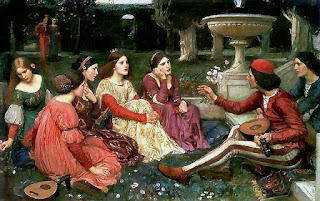It wasn't all politics: in 1461 he canonized Saint Catherine of Siena. Much of the rest of his energy was put into more worldly actions, however, even if they had religious goals.
One of his first actions in 1458 was to make an alliance with Ferdinand II of Aragon who was pressing a claim to Naples (Naples was being contested between the House of Aragon and the House of Anjou.) In 1461, however, he persuaded King Louis XI of France to abolish something called the Pragmatic Sanction of Bourges, established in 1438 that required a Church Council every ten years that had power to overrule the papacy in France. Louis thought that, in turn, Pius would support him in the Naples question, but Pius stood by his alliance with Ferdinand and Louis reinstated the Pragmatic Sanction again.
He tried to mediate between the two sides of the Thirteen Years' War between Poland and the Teutonic Knights. Failing to bring them to agreement, he declared both groups anathema.
When Duke Sigismund arrested Nicholas of Cusa (when he was bishop of Brixen) for attempting reforms and reclaiming lost diocesan revenue, Pius excommunicated Sigismund.
He was very concerned about the Turks, who had come as far west as they ever had in 1453 with the taking of Constantinople. He convened a congress in Mantua in 1459 to arrange a new Crusade against the Turks. The attempt failed; Christendom did not rise to the occasion. He did, however, inspire a prince of Wallachia, a province in Romania, to mount a war against Sultan Mehmed II of Turkey. That prince was named Vlad Tsepes, also known as Vlad III, or Vlad the Impaler, but whose other nickname came down to modern times as a famous literary figure: Dracula.
Tomorrow I'll tell you about how Dracula tried to save Christendom from infidels.








.png)

















